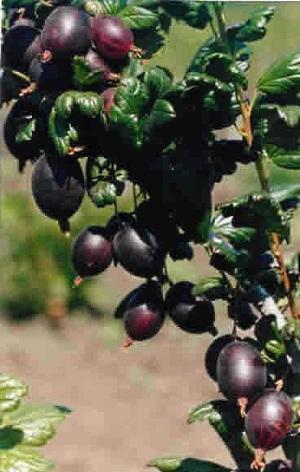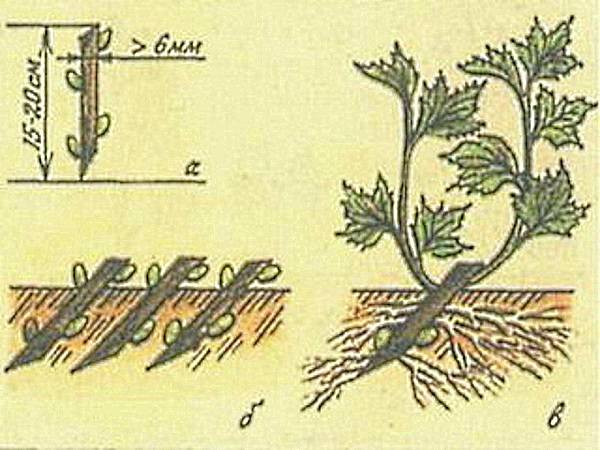Planting Prune gooseberry in the country and caring for it
 Today it is rare to find a summer cottage on which gooseberries would not have been planted. There is always a place for tasty and healthy berries in the garden, despite the fact that the bushes can grow strongly.
Today it is rare to find a summer cottage on which gooseberries would not have been planted. There is always a place for tasty and healthy berries in the garden, despite the fact that the bushes can grow strongly.
Growing gooseberries on a personal plot, every summer resident wants, first of all, to get an excellent and high-quality harvest of fruits from the bushes. But not all varieties of gooseberries, unfortunately, can please with a high yield. Therefore, before planting gooseberries in your country house, you should clearly define the type and its features.
So, many experienced gardeners have already experienced in practice such a gooseberry variety as Prune (Grossularia reclinata Chernolivovyi).
Details about Prune Gooseberries

Buying gooseberry seedlings in specialized stores, every second summer resident is faced with a description of the Prune gooseberry variety:
- features of the bushes - medium-sized with an inclined direction of not dense branches; young shoots are thick, often straight, light green in color; old branches are light brown in color; branches practically do not contain thorns, which are located on the lower parts of the branches, are very rare and short;
- the foliage of the variety is round, medium or small, quite dense, does not create pubescence of the bush;
- inflorescences are of medium size, having the property of self-pollination;
- fruits - berries of medium size, oval or pear-shaped, during ripening they have a dark red tint, at the time of full ripeness they acquire a black color, there is a waxy coating on the berries;
- palatability of fruits - sweet and sour berries with plum aroma and aftertaste; are used for consumption fresh or processed, as infusions, compotes, jams, wines and juices;
- yield indicator - one and a half to four kilograms per bush;
- the degree of resistance to diseases is medium;
- resistance to natural and climatic conditions - designed for growing in harsh conditions, winter hardy.
Evaluating all the advantages of the description of the Prune gooseberry, few experienced summer residents refuse to plant it in their garden. However, in order to get a harvest of up to four kilograms from one bush, you need, firstly, to plant it correctly, and, secondly, to subsequently learn how to take care of it and properly care for it.
Correct fit
This gooseberry variety does not like shaded areas at all, therefore it is recommended to plant Prune gooseberries on well-lit sunny plantations. In no case should seedlings be placed under the developed crowns of old trees. Planting between young trees at a distance of up to two meters is allowed.
An excellent place for the development of gooseberries can be a strip along the hedge at a distance from it within one and a half meters.
Prunes do not take root well in areas where raspberries or currants were predecessors, they very much deplete the soil.Such areas can also be the cause of the development of many diseases that are common to these types of fruit shrubs.
The Prune gooseberry variety is very responsive on fertile, drained soils; it is not recommended to plant it in lowlands with an excess of moisture.
It is recommended to plant Prune gooseberries in the autumn period (late September - early October), the winter-hardy seedling manages to get stronger and take root before the onset of cold weather.
However, gooseberries can also be planted in early spring before bud break. It is in the spring that the planting method using cuttings is effective.
 Proper care
Proper care
Care includes the following activities:
- timely removal of weeds in the crowns of bushes and on the plantation where gooseberries are planted;
- timely pruning of dried branches affected by pests or diseases;
- abundant watering during the flowering period, pouring fruits, preparing for the winter period;
- autumn feeding with phosphorus, potash and organic fertilizers at the age of two bush;
- mulching the soil under the bush in order to retain the necessary moisture;
- spring crown formation before bud break;
- prevention and control of diseases.
The predisposition of the variety to diseases:
 powdery mildew - the appearance on leaves, shoots and fruits of white flour bloom; in order to combat, solutions of copper sulfate, potassium permanganate and chemical special preparations are effective;
powdery mildew - the appearance on leaves, shoots and fruits of white flour bloom; in order to combat, solutions of copper sulfate, potassium permanganate and chemical special preparations are effective; anthracosis - the appearance of brown spots on the foliage, starting from the lower tiers of the bush; effective treatment with special chemicals;
anthracosis - the appearance of brown spots on the foliage, starting from the lower tiers of the bush; effective treatment with special chemicals; goblet rust - the appearance of yellow-brown spore pads on leaves, inflorescences, ovaries, fruits; also effective are chemicals for spraying bushes.
goblet rust - the appearance of yellow-brown spore pads on leaves, inflorescences, ovaries, fruits; also effective are chemicals for spraying bushes.